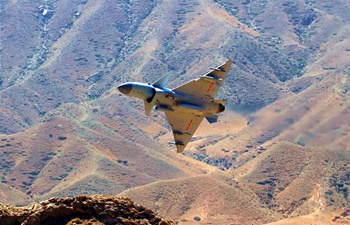SYDNEY, April 18 (Xinhua) -- Like all stars, the Sun was not born in isolation but as part of a cluster of thousands. An Australian-led team of astronomers working with European partners announced on Wednesday that they are one step closer to finding what they call the Sun's "siblings."
Launched in late 2013 by the University of Sydney, the Galactic Archaeology survey (GALAH) is attempting to map over 1 million starts in order to uncover how galaxies have formulated and evolved.
Wednesday marks the first major public release with over 340,000 stars "DNA" surveyed.
"Every star from a cluster will have the same chemical composition, or DNA - these clusters are quickly pulled apart by our Milky Way Galaxy and are now scattered across the sky," Sarah Martell who leads GALAH survey observations explained.
"The GALAH team's aim is to make DNA matches between stars to find their long-lost sisters and brothers."
Containing nearly two dozen chemical elements such as oxygen, aluminium and iron, astronomers are able to capture a stars light with a telescope and pass it through to an instrument called a spectrograph.
This highly advanced equipment is then able to split the light into detailed rainbows known as a spectra.
"Each chemical element leaves a unique pattern of dark bands at specific wavelengths in these spectra, like fingerprints," Associate Professor Daniel Zucker from the Australian Astronomical Observatory said.
The data from GALAH comes as the European satellite Gaia is set to release a map of more than 1.6 billion Milky Way stars on April 25.
In combination with GALAH, Gaia's star chart will not only confirm the positions and distances of the stars, but also their motions within the Galaxy.
Professor Tomaz Zwitter from the University of Ljubljana in Slovenia said Wednesday's results from the GALAH survey will be crucial when interpreting the results from Gaia.
"The accuracy of the velocities that we are achieving with GALAH is unprecedented for such a large survey," he said.

















